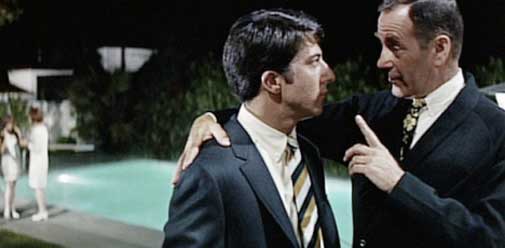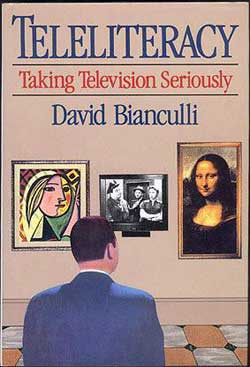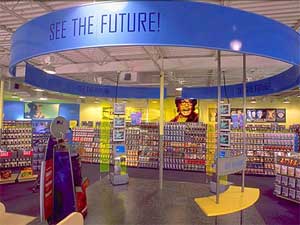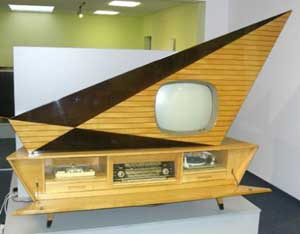
Almost 20 years ago, in my first book, I predicted what TV might look like in the future - and now that the future's here, it happens I was right. So I'm wondering: What will television look like two decades from NOW? And this time, just for fun, why don't YOU guess?...
[And hey, maybe it doesn't have to be just for fun. If TV WORTH WATCHING is still up and running in June 2031, let's all reunite and see whose guess came closest. The winner will receive a vintage piece of TV memorabilia from the good old days of 2011, which I'll put aside now, just in case.]

In 1991, I wrote Teleliteracy: Taking Television Seriously, a book-length defense of the medium that was published by Continuum in 1992, and later reprinted by Simon & Schuster and Syracuse University Press. You can still buy the book, if so inclined, by clicking HERE.)
In one chapter, "The Medium is Not the Message," I imaged what TV might look like decades into the future. I wrote this in an era before DVDs, before home-satellite transmission, before Video on Demand -- back when the biggest home entertainment options were the TV set and VHS videos rented from Blockbuster.
"I suspect, 'real time' television will not vanish entirely," I wrote then. The instant availability of all types of music -- on record albums, singles, cassettes, and CDs -- hasn't killed radio. People continue to gravitate towards 'star' personalities, and there's a lot to be said for the shared communal experience of a simultaneous national broadcast. Radio used to provide it; now television does.
"Even if tomorrow's version comes via satellite, or fiber-optics transmission, or a massive home-entertainment database, there will always be room for 'real time' transmission and enjoyment of entertainment -- not just news, sports, and weather.
"The likelihood is that viewers at home eventually will be able to call up any program they like -- at any time -- from a massive national network of databases, and store it on disc or tape (at a set fee, naturally) for retrieval and reviewing at their own leisure.

"If anything's at risk under this new delivery system, it's the video rental chains -- except that it's equally easy to imagine a 'Blockbuster Video Database' establishing a major foothold there, too. Most probably, any asynchronous delivery system -- in which viewers decide what and when they will be watching -- will complement, rather than replace, what we now know as simultaneous 'network' delivery of program offerings.
"Television without a set of 'live' options would be like a restaurant without a menu. You don't have to visit that restaurant -- but when you choose to go there, it's nice to have a basic selection. Otherwise, a choice that's truly unlimited can be somewhat overwhelming...
"And as thrilled as I am about the prospects for high-definition television, and the multimedia work stations combining state-of-the-art audio, video, CD, and database facilities, I'm afraid when they get here, they'll arrive at such a speed that it'll be tough for TV critics to jump on board.
"In the 1967 movie The Graduate [see photo at top of today's column], the secret word was plastics. A quarter-century later, the secret word is fiber-optics."

That's how I saw things, peering into the future, at the start of the 1990s. How do YOU see things to come from your vantage point now, at the start of the 2010s? Twenty years from now, what will your TV set look like? How will you use it? And what, pray tell, will be on it?
And let your imagination run freely, because this is one question where your answer can't be judged wrong. Not for 20 years, that is...
[Oh, and for the record:
[If I am, indeed, still editing TV WORTH WATCHING in 2031, someone, please, find me and shoot me. Tell them I sent you from the past, as in a bad sci-fi TV series, with orders to put me out of my own misery.
[And, unless I give you a really compelling argument why I shouldn't be retired, pull the trigger...]